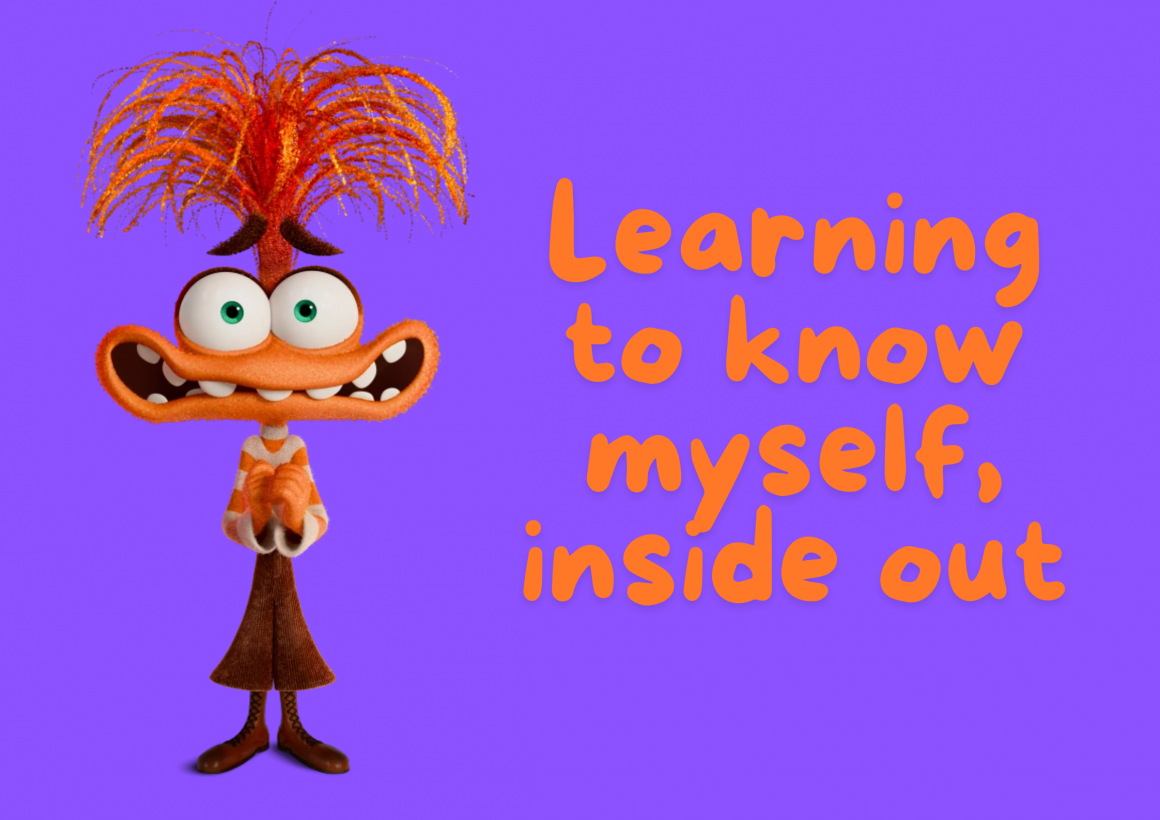
Learning to know myself: A reflection on Inside Out 2
By Eda Kamal, July 17 2024—
Life has taught me that smiles and tears are not always accurate indicators of what is happening in someone else’s head. It’s difficult to figure out what someone is thinking or feeling just by looking and speaking to them — empathy can only go so far.
Sometimes, you wish you could just walk into another human’s brain and inspect their every thought, searching for their deepest ruminations. You want to know how people perceive you, themselves, and the world you share with them. This is an itch that Pixar attempted to scratch — twice. I suppose it’s up to you how well that went, but critics are impressed.
As the highest-grossing film in 2024 so far, Inside Out 2 is a much-anticipated follow-up to Pixar’s original endeavour into the workings of a preteen’s emotions during a tumultuous time in her life, Inside Out. I remember watching the first film in theatres on my tenth birthday. It was one of those movies you watched as a kid that made you rethink your entire existence.
Ten-year-old me questioned if my emotions would ever become as unstable as main character Riley’s. Her main emotion, Joy, needed to learn to allow the other emotions of Sadness, Disgust, Fear, and Anger to have the spotlight too sometimes. I was a very consistently joyful and optimistic child when I watched Inside Out for the first time, and it scared me that happiness was not a guarantee for the future. I hated feeling anything other than happy.
Contrary to my hopes and wishes, I indeed began to struggle with my mental health as a preteen and teenager, as many in that age group do. Some type of metaphorical shroud was placed over the joy I always used to feel. Gradually, however, the shroud lifted. I have definitely been changed by the experiences and thoughts I endured in my darkest times, but I am able to accept positivity and light into my life in ways I hadn’t allowed myself to since childhood.
When I sat in the theatre recently to watch Inside Out 2 for my nineteenth birthday, I was looking forward to some representation of teenage angst and not just the stereotypical romanticization of high school. In the film, Riley develops four brand-new emotions — Anxiety, Envy, Embarrassment, and Ennui (a Google search clarifies that this last one refers to listlessness and dissatisfaction) alongside the five existing ones. I felt as though this was an accurate reflection of how complex we become as we grow, and that our emotions continue to become more complicated over time. There’s a little guy named Pettiness dictating my every move right now.
Complex emotions take time to emerge in reality and don’t ‘move in’ overnight like they did in the film, but it does in hindsight feel like an immediate change. Instantaneously, Anxiety completely took over Riley’s brain — aiming to secure her a better future in hockey. Joy wanted to contain Anxiety because the levels of anxiety were hurting Riley more than helping her.
For brevity’s sake, Inside Out 2 taught us that balance is key to managing every emotion. There’s a healthy dose of everything, and toxic positivity has the potential to be just as bad as overbearing anxiety.
When I was younger, after experiencing intense bouts of anxiety, I labelled the emotion as something wholly negative and to be avoided. I would rather completely shut down and be non-functional than allow myself to feel anxious because of how overwhelming the feeling was.
Over time, I learned how to use some anxiety to my advantage — like studying for tests. For others, the constant overload of anxiety that inhibits day-to-day activity may require medication and therapy to manage. Either way, it takes years to get to know yourself and your needs, and even longer to implement those changes. That is why one of my slight qualms with Inside Out 2 was that the entire story took place over three days. From not even experiencing any anxiety, to being completely governed by it, to accepting it as one facet of a vast emotional reality, the entire arc only took Riley a weekend to process.
At the end of the day, this is a children’s movie, and there was only an hour and a half to tell this incredibly complex story. But if I had seen this while actively struggling with my mental health the way I did at Riley’s age, I would have felt like a bit of a failure for not being able to manage my own emotions at the same speed.
It was cathartic watching the events of my future play out in Inside Out and the events of my past in Inside Out 2, no matter how condensed. The sequel made a joke about Nostalgia being due to arrive only after several graduations, baby showers, and weddings, but she’s already made a home for herself in my mind and is constantly thinking about that joyful little girl I used to be.
While there’s no way to go back to what life felt like before, it is nice to know that the struggles I endured with my mental health led to a brighter future. In the (almost) decade since the first movie came out, so much has changed in my mind, and I have a feeling the next ten years have a lot in store for me too. My frontal lobe is still yet to have fully developed! I’m excited to continue learning about who I am and what I’d like to become now that I’ve escaped the grasp of teenage angst.
This article is a part of our Voices section and does not necessarily reflect the views of the Gauntlet editorial board.
